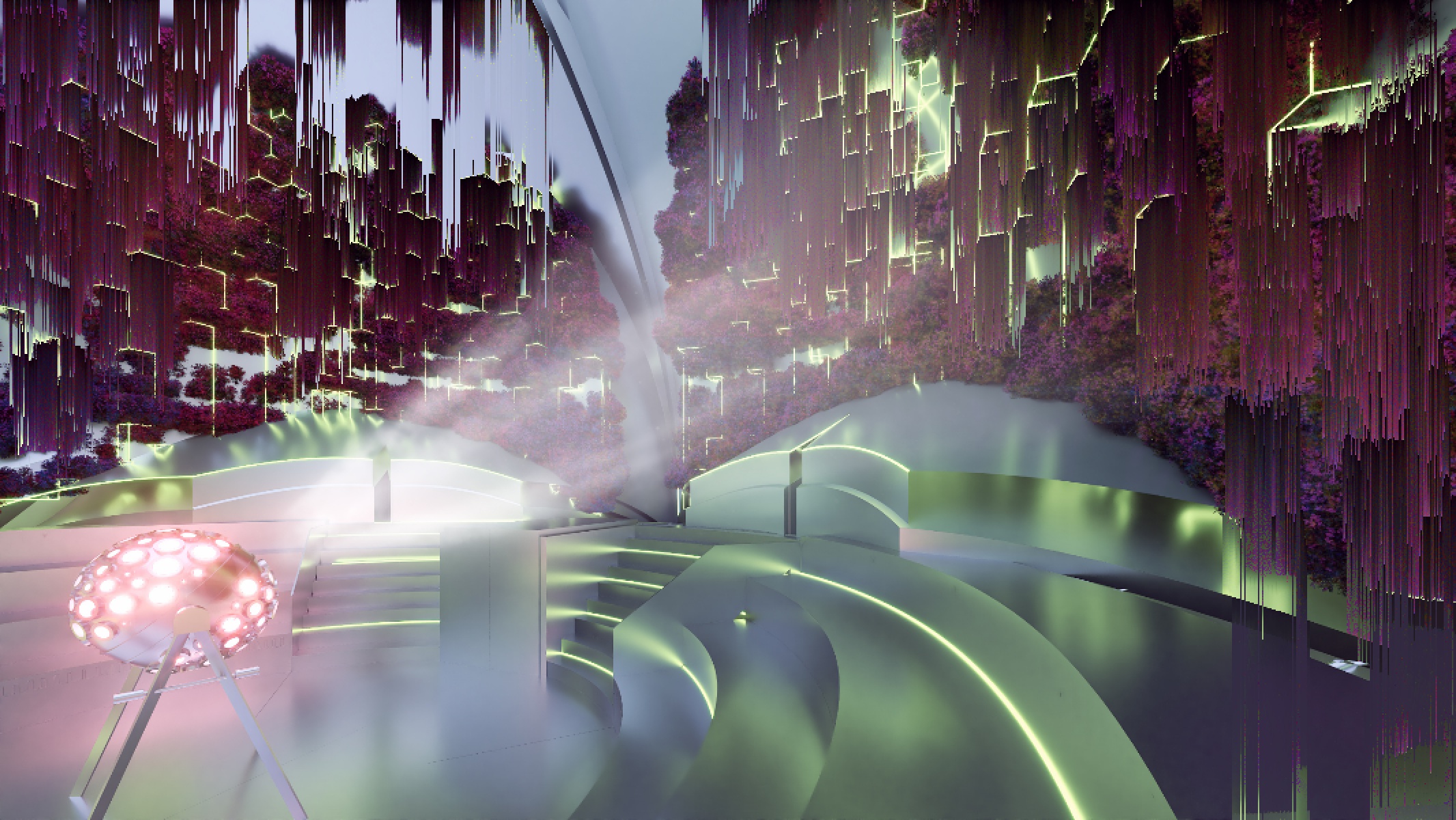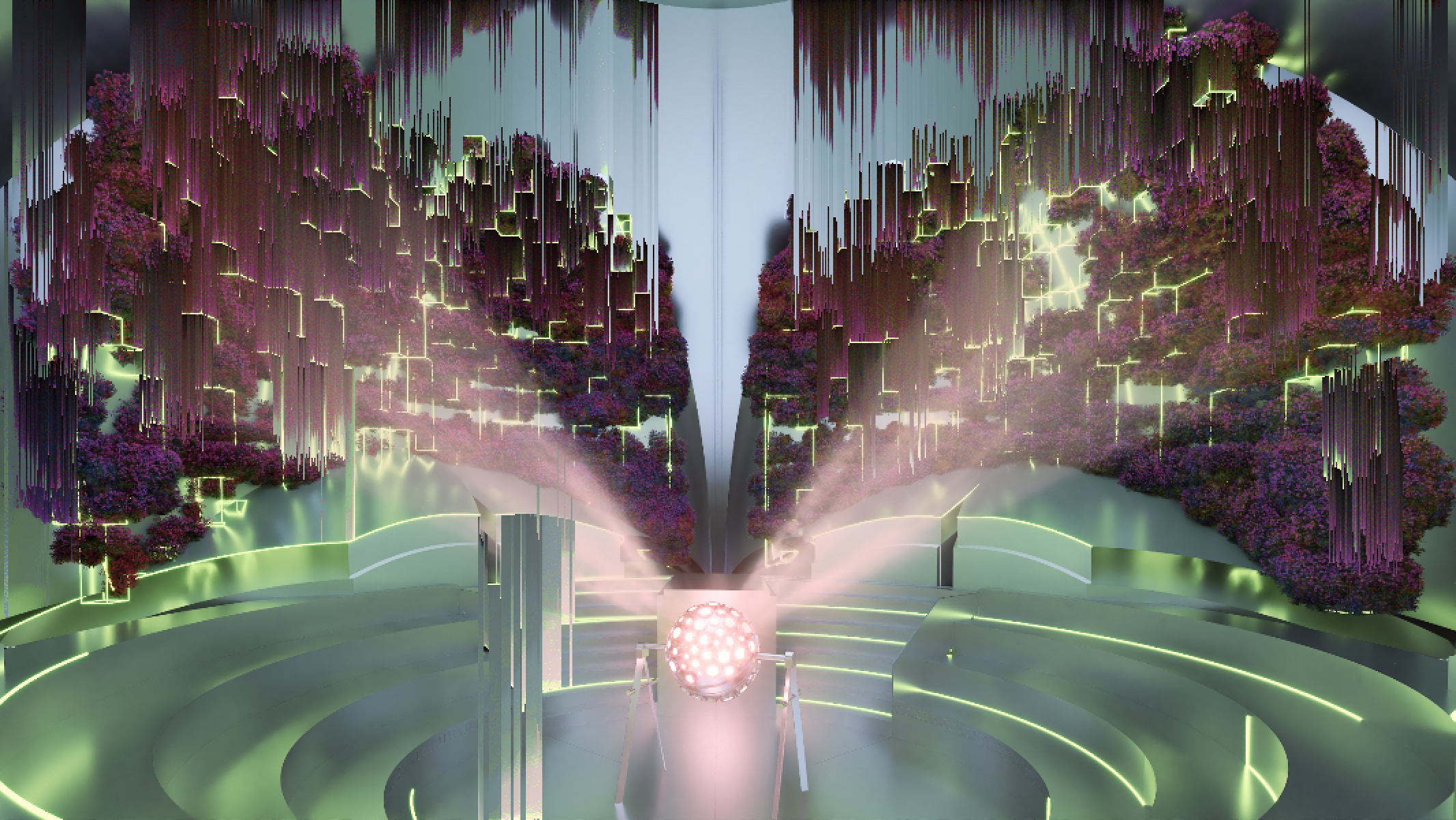FLORA
FUTURA
March Architectural Diploma
University of Applied Arts Vienna
Professor: Hani Rashid Asymptote New York
How
will the relationship between human and nature develope in the age of
mixed reality and automatisation? How will we perceive nature in the
digital age? Will it change our human habits and connection to
nature?
In
the time of climate change and biodiversity crisis we need to remind
ourselves to our position in the natural world. With the dawn of the
digital age and automatisation we need a new construct(definition) of
nature, by including technology to its term.
FloraFutura
creates a space for changing one's perspective towards nature. A
space that turns the human from the anthropocentric to an ecocentric
worldview and encourages individuals to preserve and respect nature,
where nature, technology, and the individual are merging and
interacting together. FloraFutura aims to create space for
encouraging natural developments and raising the urgent needs of
environmental awareness. A physical manifestation of ecocentric
values, needs, and aspirations.
This space should gather the Humboldts of today and tomorrow - whose activities contribute to the fields of ecology, global change, fight against established social rules and conventions. The ‘Greta generation’ urges nature as it was, they demonstrate, argue and fight for the climate. They live from the idea of an idealized construct of nature - they are the “new romantics”. As they will be the next generation of environmental scientists, engineers, NGO’s leaders, environmental lawyers, ecotourists and local farmers and gardeners, we can assume that they will shape the future of how we will perceive nature and our environment.
The botanical garden should develop from just preserving the plant biodiversity to creating a conversation between nature, technology, and human.
Hydroponics and robotics maintain the flora by taking care of characteristics as water supply, ph-levels, light and nutritional provision, coded and controlled by measuring systems. The spectators‘ multisensory perception is stimulated by visual, acoustic, olfactory and mechanic characteristics and is in direct biotic interaction with the plants through the exchange of oxygen and CO². The plants by themselves communicate with each other through chemical, hormonal signals, carbons, nitrogen, phosphorus, and water.
Florafutura
is a biotech-park
an
automated garden
a
data and seed market
a
collection of artefacts of the nature
a
museological space for nature
a
space for celebration the relation
between
human and the environment.











ARMOR.
3D Printed Breastplate for Intro to Digital Fabrication
in collaboration with Laure Michelon
2019
Armor
Armor is a research-driven exploration into the integration of robotic fabrication within the realms of fashion and architecture. Initiated at the SCI-Arc Robot House, the project investigates methods for 3D printing directly onto the human form using industrial robotics. As Michelon and Nanu describe, “We were aiming to find ways and solutions to 3D print directly on the mannequin. Along with our inspirations, these techniques also influenced the figure forms of our project, Armor.”
The project leverages custom coding and robotic tooling to develop wearable structures that respond to both the precision and creative potential of digital fabrication. The robotic arm becomes a design partner—capable of executing intricate geometries, optimizing material behavior, and introducing new possibilities for form-making across disciplines.
Reflecting on the broader impact of digital fabrication, the designers state, “It will allow for more design options and alternatives in both fashion and architecture. The robots can allow for precision and optimization in new materials and discovering geometries. The robots are a supportive tool to approach this exploration.”
Armor operates at the convergence of body, machine, and material—proposing a speculative yet tangible future where robotic processes inform the next generation of wearable architecture.
Armor: 3D Printed Breastplate for Intro to Digital Fabrication by Laure Michelon and Silvia Nanu - Image © Curime Batliner

Re_edge City - Urban industry in the age of artificial intelligience
2017/2018
Studio Hani Rashid
University of applied arts,
Vienna